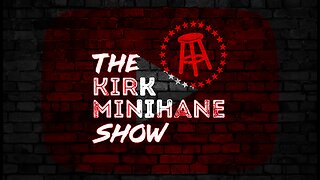Squat Myths and Misconceptions (Bad For Knees?)
The thing about myths is they’re often based on half-truths, and as the story is passed on from one person to the next, the details change slightly; once we’ve heard it often enough, we start to believe it as fact.
There are a lot of squat myths and misconceptions, but today we’ll look at 3, including whether or not squats cause hemorrhoids.
The first myth; squats are the only exercise you need for your lower body, and they’re often called a whole body exercise. They do work more than just your quads.
If you would like help losing excess body fat and building muscle, please email me at 1shark1bite@gmail.com for information on my personal training services.
To purchase the tee shirt and shorts I’m wearing in this video or any Fit and 50 workout wear, click here, https://fit-and-50.creator-spring.com
Check your testosterone levels from home. Just click this link http://trylgc.com/laurence and receive 30% off with code: LAURENCE30 I receive commissions on referrals to LetsGetChecked. I only recommend services I know and trust.
If you would like to purchase a set of Torrobands for yourself, here is my affiliate link so you can receive 50% off on your purchase https://sale.torroband.com/?affId=555B3E5D
Are you in the market for a fun way to get cardio in? If you are here is my affiliate link for 30 dollars off and free shipping on a set of 2 heavy jump ropes http://vip.torroband.com/heavyrope/?ref=codd&affId=555B3E5D
Bells of Steel is a home gym equipment supplier, they have everything from the basics to commercial gym quality products https://www.bellsofsteel.us/#a_aid=FITAND50
One study that compared leg muscle growth after 10 weeks of squats between parallel squats and full-depth squats found that the knee extensor or quads, adductors and gluteus maximus muscles grew in both groups, but the hamstrings and rectus femoris, which is one of the quad muscles didn’t grow at all illustrating the need for more exercises to achieve complete leg development.
We can’t forget our calves either; they’re a leg muscle that, again, isn’t sufficiently worked with squats alone.
Adding Romanian deadlifts, hamstring curls, leg extensions, and calf raises goes a long way in rounding out our leg training.
What about squats being bad for our knees? This comes down to squat form and any pre-existing injuries to your knees. The main form issues are not squatting with your hips back far enough and your knees going too far forward, having your weight shift from midfoot to the balls of your feet, raising your heels off the ground.
This less stable position increases your risk of injury, particularly to your ACL or MCL ligaments. This happens when your knees cave inwards. Other causes of this are weak abductors.
Most of the time, we can resist the tendency of our knees to cave in by conscientiously focusing on pulling our knees outward as we rise out of a squat.
Because we’re talking about knee pain, we think of the knee joint, but a squat involves 3 joints, our hips, knees and ankles, and we need to think about all three when we squat.
Trying to keep our knees from going over our toes will affect the other joints and, in particular, are hips, with one study finding restricting the forward movement of the knees on the barbell squat inappropriately transfers the force to the hips and low back. Concluding appropriate joint loading during this exercise may require the knees to move slightly past the toes.”
I recently discovered that squats can cause hemorrhoids or plies.
And what it comes down to is breathing and bracing technique during the squat.
The way you breathe and brace for a high rep squat is different than when doing heavy low repetitions.
When we do a higher rep squat, we brace our core; this includes tightening our pelvic floor and glutes. Then we inhale as we descend, and once we reach the bottom, we might hold our breath briefly as we reverse direction and move out of the most challenging part of the squat, then we exhale, releasing internal pressure.
With a heavy squat, we do what’s called the Valsulva maneuver
This creates intra-abdominal pressure allowing for superior stabilization of the spine, which can cause hemorrhoids, especially when we push out of the bottom position. That’s why we need to brace against it by tightening our pelvic floor and glutes along with the rest of our core muscles.
https://academic.oup.com/ptj/article/88/4/427/2742305
https://pubmed.ncbi.nlm.nih.gov/14636100/
https://pubmed.ncbi.nlm.nih.gov/31230110/
https://journals.lww.com/nsca-jscr/Fulltext/2013/08000/The_Valsalva_Maneuver__Its_Effect_on.39.aspx
-
 4:47
4:47
Fit and 50
8 months ago $0.03 earnedThe Best Way to Choose Exercises for Muscle Growth (Greek god Physique)
4052 -
 13:52
13:52
America Uncovered
23 hours agoEveryone is WRONG About Trump's Guilty Verdict
16.1K34 -
 13:10
13:10
Censored TV
22 hours agoThe Owen Benjamin vs Jim Goad debate was WILD
19.7K20 -
 25:27
25:27
Degenerate Plays
14 hours agoThe Microtransaction Master - Call Of Duty Modern Warfare Remastered : Part 3
19.8K2 -
 21:03
21:03
MYLUNCHBREAK CHANNEL PAGE
17 hours agoOld World Minnesota?
25.8K22 -
 5:49:05
5:49:05
Akademiks
23 hours agoDrake Next Move - Whats next?? Did Lil Baby Listen to Me? Diddy and Family Preparing for Indictment?
82.3K43 -
 1:56:06
1:56:06
TimcastIRL
1 day agoTrump Raises RECORD $52.8 MILLION In One Day, Bonus Uncensored Show w/Laura Loomer | Timcast IRL
101K408 -
 23:19
23:19
Scammer Payback
4 days agoWe Created the First Ever 𝗔𝗡𝗧𝗜-𝗦𝗖𝗔𝗠 Call Center
217K256 -
 1:11:09
1:11:09
LFA TV
1 day agoTRUMP GUILTY…OF LOVING AMERICA! Ft. Hayley Caronia & Vish Burra | LAST CALL 6.1.24 8PM EST
78.8K49 -
 1:02:02
1:02:02
The Kirk Minihane Show
17 hours ago420 Show
55.1K2